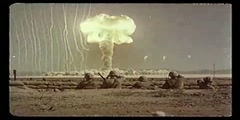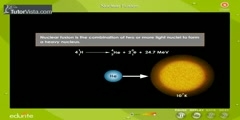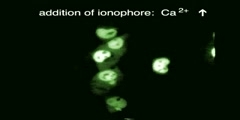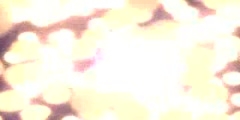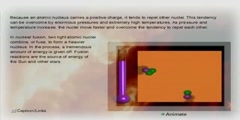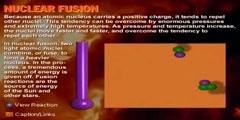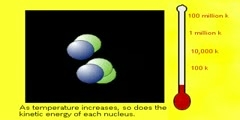Nuclear Bombs
The hydrogen bomb (mankind's most destructive weapon -also known as the H-Bomb or thermonuclear bomb) works on the principle of nuclear fusion, where isotopes of hydrogen (namely Deuterium and tritium) combine or fuse under extremely high temperatures to form helium. Hydrogen atoms are "ideal candidates" here for their very light nuclei that carry very weak positive charges serve well in the process of fusion. The conversion of mass into energy in the hydrogen bomb is actually an application of Albert Einstein's famous formula E = mc2. As mentioned before, Hydrogen nuclei fuse only under extremely high temperatures, accordingly, the hydrogen bomb requires tremendous heat in order to detonate. Such heat is attained by the explosion of an atomic bomb, i.e: it takes an atomic bomb just to initiate the process of fusion. One can now imagine the great explosive -and destructive- power of this bomb. "A thermonuclear explosion produces blast, light, heat and varying amounts of fallout." The blast produces concussive force in the form of a shock wave that radiates at supersonic speeds to destroy buildings several miles away from the point of the explosion. The light emitted is so intense that it can cause permanent blindness to those who gaze at it from a distance of dozens of miles. The heat, along with the light, may ignite an entire firestorm. The radioactive fallout lasts for long intervals, contaminating air, water and soil. "The explosive power of hydrogen bombs is frequently expressed in megatons, each unit of which equals the explosive force of 1,000,000 tons of TNT." The atomic bomb -also called the A-Bomb- is a destructive weapon, marked by its great explosive power. It works on the principle of nuclear fission, in which uranium-235 or plutonium-239 is used to undergo fission. When a neutron strikes the nucleus of an atom of uranium-235 or plutonium-239, the nucleus fissions or splits.During such process, a great deal of gamma rays and thermal energy are produced, in addition to two or more neutrons that set out to split the surrounding nuclei, forming what is referred to as a chain reaction. The amount of energy produced during fission is relative to the material involved. It is estimated that one kg of uranium-235 -when completely fissioned- releases amounts of energy that are equivalently produced by 17,000 tons of TNT. The thermal energy released in an A-Bomb explosion may reach temperatures of several million degrees, forming a huge fire ball great enough to ignite ground fires that can destroy an entire small city.
Channels: Physics (General)
Uploaded by: NicolaTesla ( Send Message ) on 16-11-2010.
Duration: 8m 31s

